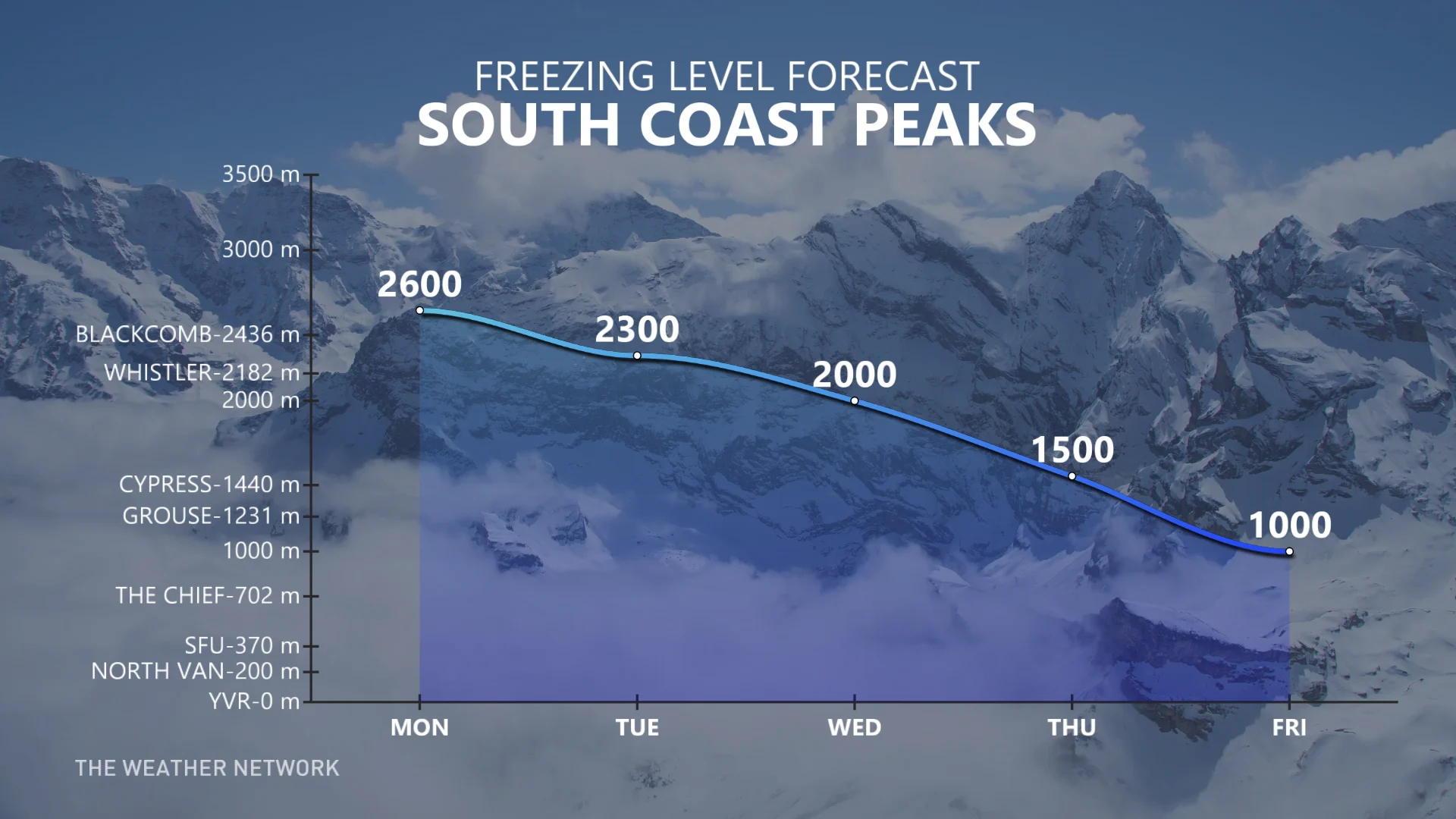By the time the rain wraps up, we’re likely to see rainfall totals amounting to more than 200 mm across the higher terrain along western Vancouver Island. Other regions that could accumulate excessive rainfall include the Sea-to-Sky Corridor, where up to 150 mm is predicted through Tuesday afternoon.
High freezing levels are concerning. This deep reserve of mild, tropical air is bad news for ski resorts along the North Shore and Vancouver Island, where freezing levels will jump higher than 2500 m through the middle of the week.
Combined rainfall and snowmelt will lead to a flooding risk around the mountains, as well as creating an unstable snowpack that will enhance the potential for avalanches in the backcountry, to considerable levels in many areas, along with mudslides.
MUST SEE: Get ahead of disaster: Six tips to manage flooding
Widespread flood watches and high streamflow advisories are in effect across southwestern B.C., with a flood warning issued on Sunday for the Sumas River in the Lower Fraser Valley.
WATCH: A parade of storms creates dangerous conditions in British Columbia
Remain mindful of the risk for flooding around vulnerable low-lying areas, and avoid driving across flooded roadways if you come across high water. It’s impossible to tell how deep the water is until it’s too late, and the road may have been washed out beneath the water.
The strong and mild southwest flow mean temperatures on Monday will be in the low teens across southern Vancouver Island and Metro Vancouver, up to 10 degrees above seasonal. A couple of stations may record temperatures as warm at 15 or 16°C –– making it one of the warmest January days on record across Metro Vancouver.



